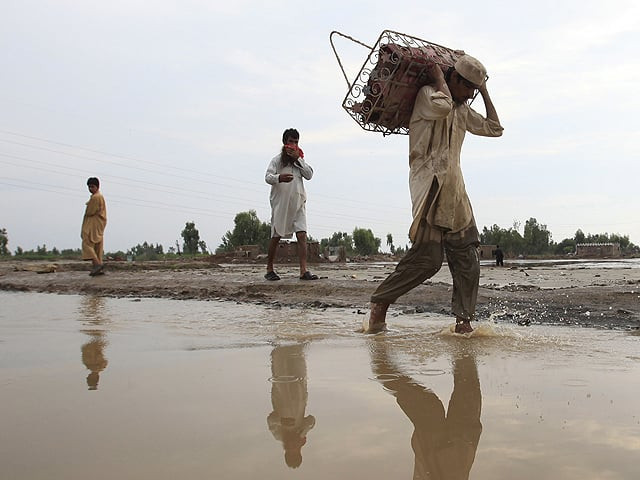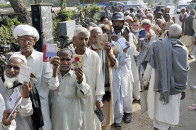Shangla district: the Noachian deluge
“There were 60 houses in this colony here,” says Damorai resident pointing towards a hollow in the mountain.

After struggling fruitlessly to catch a glimpse of the colony, he looks at me with a hopeless smile and says, “Forget about it. You won’t see the difference – it’s all gone”.
Shangla, a district of Malakand division, has been hit hard by the torrential rainfall. However, it was not only the flood that played havoc with the area. Landslides have swept away almost the entire road stretching from close to the district headquarters of Alpuri to the far flung areas of Olandar. Just debris remains.
Ayaz Khan, DCO Shangla, confirms that there have been more than 200 fatalities – but the data is based on only preliminary estimates.
“There are some 1,000 houses, 50 schools and four health units that have been washed away, but the major problem is that of the roads,” he says.
Apart from the damages to the roads and bridges, some 200 hydel power plants, used to produce electricity on a small scale, were also destroyed.
Mules are used to carry food items to far flung areas such as Shahpur, Damorai and Olandar. However, each mule can be used to transport a maximum of 54 kilogrammes, and even a trail of thirty mules is not sufficient to feed a population of more than 100,000.
Helicopters cannot make regular flights because of the bad weather. Zia, a resident of Olandar, situated at some 35 kms from where the road is cut off, says: “Not a single government official visited the area; in the last seventeen days a helicopter delivered relief only once; if the situation remains this way, our village could be on the verge of starvation.”
It takes almost eight hours on foot to reach Olander. According to police officer Ghafoor, the total number of dead in the area stands at 68, the most in a single union council. 49 people were killed in a single landslide on the night of 29th July, when four houses were wiped out of existence.
Iqbal, an eye witness and a victim of the slide, cannot control his tears recalling the incident. Though he cannot speak, he describes the scene through gestures. The fear of the incident can be seen in his eyes.
He holds out eight bruised fingers, his eyes welling. Eight members of his family members were killed in the incident.
Saifur Rehman of Shahpur village thinks that most of the people lost their lives because they were poor. “Poor? How can poverty kill someone by a flood?” I asked him.
“Because [when it happened] they were busy collecting timber, which is sold at a very good price. Most of these people are poor and poverty did kill them”.
Despite the fact that many of the villages were issued flood warnings, people were still busy in collecting their belongings and thus fell victim.
After the Noachian deluge, several people want to leave the area because the memories of the flood haunt them. Destroyed buildings, debris and a river which has changed its path, now flowing through orchards once laden with golden apples, is what remains of the district.
Muhammad Javed, however thinks differently. He says that despite the fact that the floods have caused massive landslides and washed away land which was important for agriculture, he also feels the situation has ended several land disputes of many families.
Published in The Express Tribune, August 18th, 2010.


















COMMENTS
Comments are moderated and generally will be posted if they are on-topic and not abusive.
For more information, please see our Comments FAQ